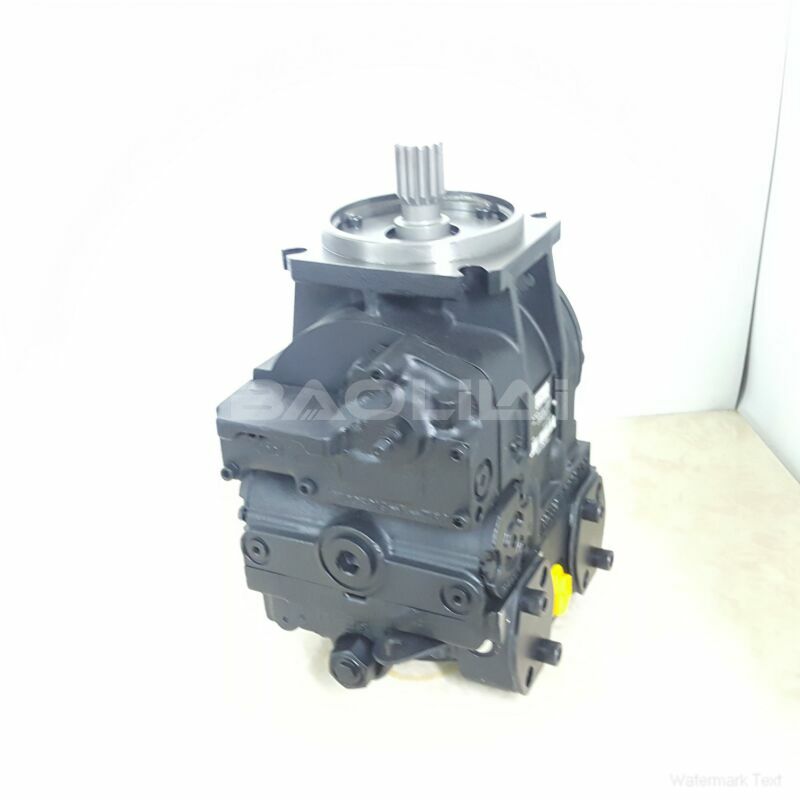Hydraulic pump troubleshooting: Analysis of common problems of BAOLILAI hydraulic pumps
Hydraulic pump troubleshooting: Analysis of common problems of BAOLILAI hydraulic pumps
As the power source of the hydraulic system, the hydraulic pump plays a key role in converting mechanical energy into hydraulic energy. During long-term operation, affected by the environment, working conditions and operating habits, the 11054307 hydraulic pump will inevitably have various faults. Even the BAOLILAI hydraulic pump with excellent quality and performance requires correct maintenance and timely troubleshooting to ensure the stable and efficient operation of the equipment. This article will analyze the common faults and troubleshooting methods of BAOLILAI hydraulic pumps in combination with practical applications to help users quickly identify and effectively solve problems.

- Common fault 1: 90-L-100-MA-1-NN-60-S-4-F1-E-03-GBA-35-35-24 hydraulic pump does not absorb oil or absorbs insufficient oil. Abnormal oil absorption of the hydraulic pump is often manifested as the pump cannot pump out oil, insufficient flow or large oil absorption noise. Common reasons include:
The oil suction pipe or oil filter is blocked, resulting in the inability of the oil to enter the pump cavity normally.
The suction pipe is not well sealed, causing air to enter and forming cavitation.
The viscosity of the hydraulic oil is too high or the oil temperature is too low, which affects the fluidity of the oil.
[Solution]
Check the suction filter regularly and replace it in time; check the sealing of the pipeline and joints; select suitable hydraulic oil and preheat it to ensure that the system reaches the normal oil temperature before running. - Common fault 2: The hydraulic pump is noisy and vibrates strongly. Noise and vibration problems are one of the common faults of hydraulic pumps. If not handled in time, they may accelerate the wear of parts and even cause damage to the pump body. The reasons are usually:
The oil contains air, and the compression and bursting of bubbles produce noise.
The suction pipeline is too long or there are too many elbows, resulting in large resistance to oil flow.
The pump is not installed firmly or the coupling concentricity deviation.
[Solution]
Check the suction system, remove air, improve the pipeline layout, reduce elbows; check the coupling and adjust the concentricity; ensure that the pump is installed firmly to avoid resonance. - Common fault 3: 90L100MA1NN60S4F1E03GBA353524 Hydraulic pump pressure is insufficient or unstable. Insufficient pressure directly affects the system output power, and pressure fluctuations will affect the stability of the system action. Common reasons are:
The safety valve setting pressure is too low or the safety valve leaks seriously.
The hydraulic pump leaks too much and the pump is seriously worn.
There is a leak in the system, and a large amount of hydraulic oil leaks out.
[Solution]
Adjust the safety valve to a reasonable pressure; check the wear of the pump accessories (such as the distribution plate and the plunger pair), and replace them if necessary; comprehensively check the system leaks and repair the leakage points. - Common fault 4: Severe heating of the hydraulic pump. The heating of the hydraulic pump will accelerate the aging of the oil, the wear of the parts, and reduce the service life of the pump. Common causes of heating:
The system is overloaded or works at high pressure for a long time.
The viscosity of the hydraulic oil is improperly selected, and the flow resistance is large.
The internal wear or abnormal matching clearance of the hydraulic pump leads to large internal leakage.
【Solution】
Reasonably control the working pressure and load; select suitable hydraulic oil to avoid excessive oil temperature; check the wear of parts in the pump and replace or repair them in time. - Common fault 5: Hydraulic pump oil leakage Oil leakage not only wastes hydraulic oil, but also may affect equipment safety. The reasons for oil leakage are mostly:
Aging or damage of oil seal.
Improper installation or failure of sealing gasket.
Cracks or damage on the pump housing or joints.
【Solution】
Regularly check and replace oil seals and seals; strictly install hydraulic pumps according to specifications to prevent damage to the sealing surface; if the pump body has cracks, stop using it and repair or replace it in time. - Summary BAOLILAI hydraulic pumps have excellent performance in actual engineering applications due to their high reliability and excellent durability, but good operation is inseparable from correct maintenance and troubleshooting. Through daily inspections, reasonable use and timely maintenance, most hydraulic pump failures can be effectively prevented. When an abnormality occurs, it is recommended to strictly follow the standard steps for investigation and treatment to ensure long-term stable, safe and efficient operation of the hydraulic system.
This article is published by the official website of Baolilai Hydraulics, please contact the author and indicate the source for reprinting:https://www.baolilai-pump.cn/news/view-3483.html


